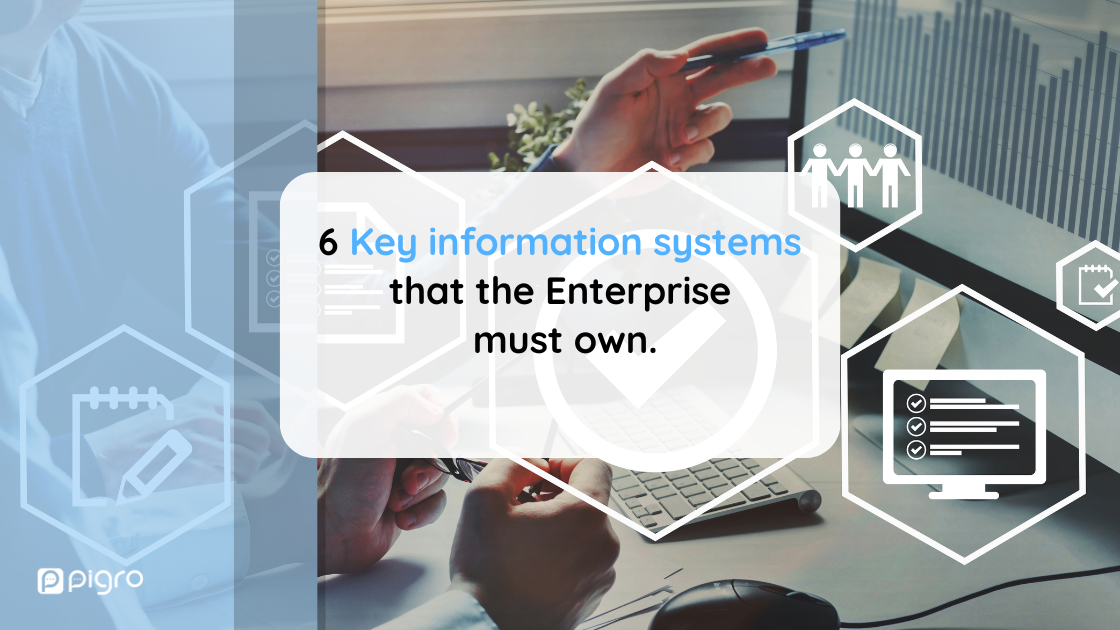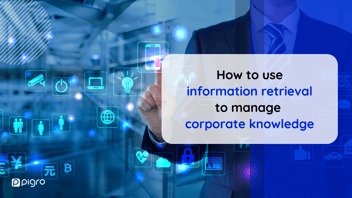The data stored must comply with certain requirements and be accessible to supervisors and managers in different departments. Online, there are various solutions to carefully store data and translate it into reports capable of enhancing the company's competitiveness. Let's discover the main ones.
How do we optimise the information management of enterprise information systems?
In today's fast-paced business environment, optimizing the information management of enterprise information systems is crucial for organizations to stay competitive. With the ever-increasing amount of data being generated and exchanged, it is essential to have effective systems in place to manage and utilize this information efficiently.
To optimize information management in enterprise information systems, organizations need to focus on several key areas. Firstly, ensuring that the data stored complies with relevant requirements is essential. This includes maintaining data integrity, security, and privacy, as well as adhering to any industry-specific regulations.
Secondly, accessibility to the data is crucial for supervisors and managers in different departments. Having a centralized system that allows authorized personnel to access and retrieve relevant information quickly is essential for efficient decision-making and collaboration across departments.
Thirdly, organizations should consider implementing solutions that can translate the stored data into meaningful reports and insights. This can help enhance the company's competitiveness by providing valuable information for strategic planning, identifying trends, and making data-driven decisions.
.By leveraging these various information management systems, organizations can facilitate access to information, enable informed decision-making, gain a comprehensive view of business performance, anticipate problems, and improve overall efficiency and productivity.
Optimizing the information management of enterprise information systems is essential in today's data-driven business landscape. By implementing the right systems and solutions, organizations can effectively manage and utilize their data, improve decision-making processes, and ultimately enhance their competitiveness in the market.
Management information systems what they are
Management Information Systems (MIS) are a set of data that are interwoven during exchanges between human and technological resources. Each business team has a reference information system with its own rules and procedures to achieve common goals.
The goal of MIS is to monitor what is happening in the company, implement processes, streamline them and strengthen them.
What is part of the information system?
MIS are the result of the interaction between people, applications, work procedures, and technology networks. Some MIS are so specific that they are essential only in certain contexts.
-
They collect information and store it;
-
They produce information when asked;
-
They transform information into new outputs.
An example of management information systems can be CRM - customer relationship management, such as HubSpot. Or management applications that monitor transactions between the company, customers, and suppliers.
Another example is software for booking goods and services. Each of these systems is created to store data, analyze it, and monitor the achievement of business objectives.
Why are Management Information Systems important?
Data is the heart of the enterprise. It often takes years, if not decades, to obtain a relevant amount of data. Data storage serves to analyze trends at any time and, if necessary, modify the entire strategy.
Information systems represent the IT infrastructure in which this information is stored. In this way, they are accessible to anyone who needs them.

The objectives of Information Systems
Through Information systems and supporting software, you can manage data with confidence. With this software:
-
Enable divisional managers to make informed decisions based on accurate and reliable data;
-
Take a 360-degree view of business performance - highlighting areas of weakness. This makes it easier to understand which areas of the business need targeted intervention.
-
You can anticipate problems and avoid business crises.
Executive Information System (EIS)
One of the most important information systems is the Executive Information System. The EIS System facilitates the work of managers. If you want to facilitate the decision-making process of managers and supervisors in your company, this system is for you.
Benefits of EIS:
-
Data is translated into colorful graphs that are pleasant to look at;
-
Allows you to highlight areas that need further investigation and targeted action;
-
Allows you to create strategic reports from raw data.
Marketing Information System (MIS)
The Marketing Information System consists of a set of strategic procedures created specifically to manage information. In fact, every piece of data collected in the marketing field is fundamental to facilitate the decision-making phase of managers.
The main advantage of integrating this system within the company is that no opportunity is missed. Be it to strengthen the brand, but also to increase the sale of services.
Speaking of marketing, an indispensable source for generating data and monitoring engagement with your audience is social media. In fact, following an editorial plan tailor-made for corporate social can increase audience interest. Each post published will strengthen the community and consequently the chances that users will get in touch with the company.
Why use it:
-
Monitor every possible opportunity with ease;
-
You can create time comparisons;
-
You can monitor strategies at all times and modify them as needed;
-
Save time in updating colleagues, supervisors, and subordinates.
Customer relationship management system (CRM)
CRM is a computer software that facilitates the entry of customer master data. In the market, there are software for all budgets, the most famous is undoubtedly HubSpot. CRM is useful for facilitating business communication between a company and its customers.
Here's why investing in an enterprise CRM:
-
you can easily manage contacts - eliminating long inactive customers;
-
you can segment customers by dividing them into membership groups - this will make communications more effective;
-
increase productivity and sales;
-
every data obtained is useful for creating accurate, understandable reports for the team and future forecasts;
-
you can easily retain customers - the customer experience will be personalized for each customer;
-
you increase ROI, improve marketing activities and the KPIs you monitor.
Sales Force Automation System (SFA)
The Sales Force Automation System is special software created to automate and streamline certain business processes. As you can imagine, automation has the primary benefit of saving time and therefore money.
Integrating SFA into the enterprise has the following benefits:
-
Strategic Sales Increase. Sales are expedited and every salesperson can focus on prospects and how to facilitate closing the deal;
-
Comprehensive view of best-selling products. This way you can understand what the strengths of each service are, which customer buys them, and how often;
-
Create a sales process tailored to the customer. Every data collected is fundamental to understanding the frequency of purchase and the type of product purchased. By monitoring this phase, you may consider selling premium products to your loyal customers.
Transaction Processing Systems (TPS)
Transaction Processing Systems (TPS) are flexible software suitable for the field of reservations, human resources, and shipment tracking.
A classic example of TPS software is invoice processing software. As you can imagine, this type of software is not recommended, it is mandatory. In fact, losing access - even for a few hours - to these services can mean risking bankruptcy.
TPS software supports managers in monitoring transactions in the company.
Supply Chain Management System (SCM)
The Supply Chain Management System represents a set of methodologies that support the work of professionals along the entire chain of creation and distribution of company products.
SCM focuses on the product and its delivery to the customer. In fact, in this area of the company, employees create specific strategies to facilitate returns, increase customer satisfaction and on-site procurement. For those who have a company based on product sales, this area is one of the most important.
Some software can facilitate the various steps so as to minimize the percentage of error.
Conclusion
Management information systems and software are useful in making managers' jobs easier. In fact, integrating automation and data analysis software is key to simplifying decision-making.
Some software is more versatile and can be used in different departments, such as Transaction Processing Systems. Whereas, other software is specific to certain operations and cannot be used in every department - as is the case with the Sales Force Automation System.
The purpose of these software is to simplify the choice process in the company, easily visualize the possible choices and increase the turnover in the company.
Read also: How to use Knowledge Management to reduce business costs
Learn more about Pigro! Contact one of our experts to check out your knowledge management strategy!



